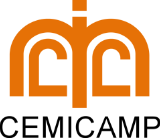 World Health Organization (WHO) Documents and Recommendations on Family Planning. WHO encourages all national health systems and organizations providing family planning to consider its recommendations to ensure the quality and safety of family planning services.
World Health Organization (WHO) Documents and Recommendations on Family Planning. WHO encourages all national health systems and organizations providing family planning to consider its recommendations to ensure the quality and safety of family planning services.
-
WHO statement on the nomenclature of levonorgestrel-releasing intrauterine devices:
The levonorgestrel-releasing intrauterine device is one of the most effective forms of long-acting reversible contraception (LARC). LARC has many advantages for women in terms of convenience and ease of continuation. The levonorgestrel-releasing intrauterine device is equally effective in women of all ages (when using the pill, patch, or vaginal ring, younger women have significantly higher contraceptive failure rates than older women). Other potential advantages of the levonorgestrel-releasing intrauterine device include its role in the treatment of menorrhagia and dysmenorrhea. (2021)
-
 Implementation guide of medical eligibility criteria and recommendations for use of contraception:
Implementation guide of medical eligibility criteria and recommendations for use of contraception: This Guide for the Implementation of Medical Eligibility Criteria and WHO Recommendations for Contraception Use (hereinafter, “Implementation Guide for the MEC and SPR Guidelines”) is part of an international initiative to translate guidelines into practice, which uses the principles of the science of Implementation. The implementation of the MEC/SPR guideline in a national program is a complex and multidisciplinary process that requires the involvement of many authorities. Implementation can and should also be pursued in a systematic and evidence-based manner. This document presents a structured process to assist the country in incorporating the most recent edition of the MEC and SPR guidelines, and their updates, into a national family planning guideline. (2018)
-
 Contraceptive eligibility for women at high risk of HIV infection:
Contraceptive eligibility for women at high risk of HIV infection: Guidelines – Recommendations on the use of contraceptive methods by women at high risk of HIV infection – The World Health Organization (WHO) convened a Guideline Development Group (GDD) meeting from 29-31 July 2019 to review guidance on contraceptive eligibility for women at high risk of acquiring HIV and to determine whether the fifth edition of the Medical Eligibility Criteria (CME) for contraceptive use needed to amend these guidelines. These guidelines were considered critical, particularly for Sub-Saharan Africa, given the high lifetime risk of contracting the virus in this region and the importance of hormonal contraception to offer women and adolescents choices and to reduce the risk of unplanned pregnancy, which is a common threat to the health, well-being and lives of women and adolescents. The GDD consisted of 28 participants from 19 countries, including experts in family planning and HIV, representatives of affected populations, clinicians, epidemiologists, researchers, program managers, policymakers, and experts in guideline methodology. (2020)
-
 A guide to identifying and documenting best practices in family planning programs:
A guide to identifying and documenting best practices in family planning programs: The expansion and institutionalization of successfully tested best practices requires strategic planning. There are many creative and constructive actions by people and organizations in the health sector to improve the health outcomes of populations. Widespread dissemination of knowledge of such actions can prevent the repetition of mistakes and the loss of valuable time. Thus, the main rationale for documenting and sharing “best practices” is to enable people and organizations working in the healthcare sector to avoid reinventing the wheel and improve performance and avoid mistakes by others. (2017)
-
 It rotates with the WHO medical eligibility criteria for the use of contraceptive methods:
It rotates with the WHO medical eligibility criteria for the use of contraceptive methods: The wheel combines the contraceptive methods contained in the inner disc, with the specific medical characteristics or conditions shown around the outer rim. The numbers that appear in the field of view indicate whether the woman who has this characteristic or known medical condition can start using the contraceptive method. (2015)


